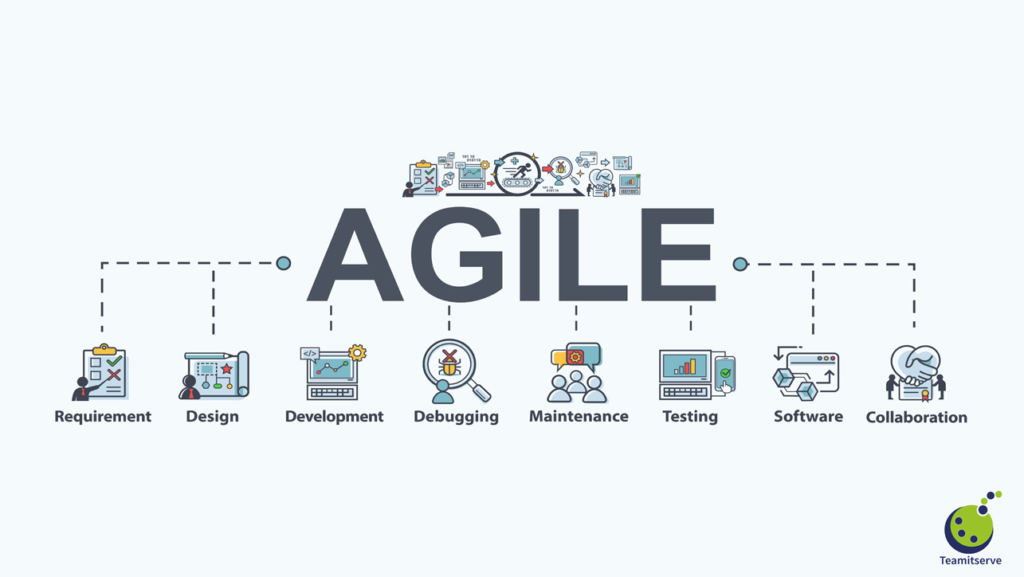
Initially, it is very important for us to know the basic meaning of the terms Waterfall and Agile, before exploring the differences between them. In a simple way, we describe, Agile means ‘able to move quickly and easily’ and hence that is what it means when it comes to the Agile development methodology. | Waterfall vs Agile
The waterfall model is a linear sequential model in which the progress flows majorly in one direction downwards through the phases of requirement gathering, analysis, design, development, testing, deployment, and maintenance. The finished product is delivered once to the customer at the end of the deployment phase. This is the oldest model for software development.
Agile is a method of project management that is represented by splitting of tasks into shorter segments of work with frequent reviews and adaptation of plans.

Waterfall vs Agile
This same example applies to the concept of project management when it comes to the waterfall model. This is a method of project management, that is represented by serial stages and a fixed plan of work.
In the Agile approach, the software development, the whole project is broken down into small manageable Segments or units. Agile is based on the iterative development model where the requirements and the solutions grow through a collective effort of self-disciplined & the cross-functional teams and their customers/stakeholders. There are multiple iterations (often called Sprints) of adaptive planning, design, development, testing (these phases also overlap with each other in the sprint) and delivery. At the end of each sprint, an MVP (Minimum Viable Product) is delivered. MVP (Minimum Viable Product) is agreed to a subset of the product features.

Waterfall methodology is a model, where each stage of the product’s life cycle occurs in a sequence. The progress of the project flows gradually downwards, which resembles a waterfall. Agile methodology is a model that follows a linear, sequential, and iterative approach. This model believes in a one-time massive whole delivery. This model believes in multiple small chunks (unit) of delivery at defined time intervals. The product is delivered at the end of the SDLC. An MVP (Minimum Viable Product) is delivered at the end of each sprint. It’s a traditional and old-fashioned approach. It’s a new and modern approach. One single cycle and single release. The repetitive number of iterations and multiple releases. It divides the software development lifecycle into different phases. It divides the software development lifecycle (SDLC) into sprints. This project has gotten so big, I’m not sure I’ll be able to deliver it! It’s so much better delivering this project in bite-size sections the process is treated as one, a single project which is further divided into different phases. The process is divided into multiple projects and each project has its own iteration of different stages. Structured and rigid model. This methodology is known for its flexibility. Long-term planning scale. Short term planning scale. A long-distance exists between the customer and the developer. A short distance exists between the developer and the customer. Long time between specification and implementation. The short time between specification and implementation. Takes a long time to discover problems. Problems are discovered quickly. High project schedule risk. Low project schedule risk. Less ability to respond quickly to change. High ability to respond quickly to change. The testing phase occurs only after the completion of the development phase. Testing is generally performed in parallel with the development to ensure quality continuously. The customer is involved only at the requirement gathering phase and after, there is no involvement of the customer.
DevOps is great for your organization. Consult the TeamITServe team for DevOps integration today.
If you are looking for experienced DevOps professionals for your organization, contact us at vic@teamitserve.com or visit the contact us section on the TeamITServe website.
